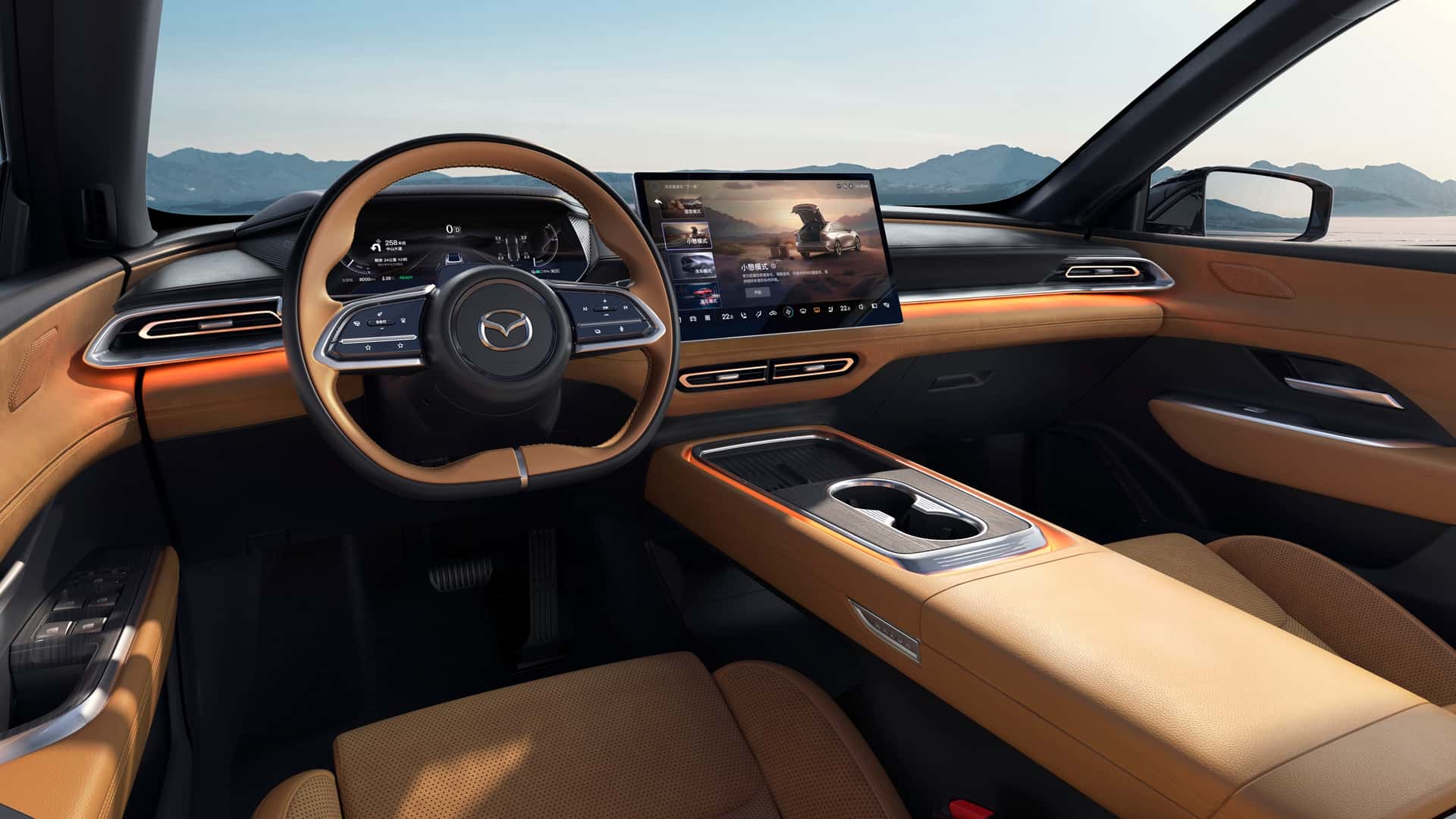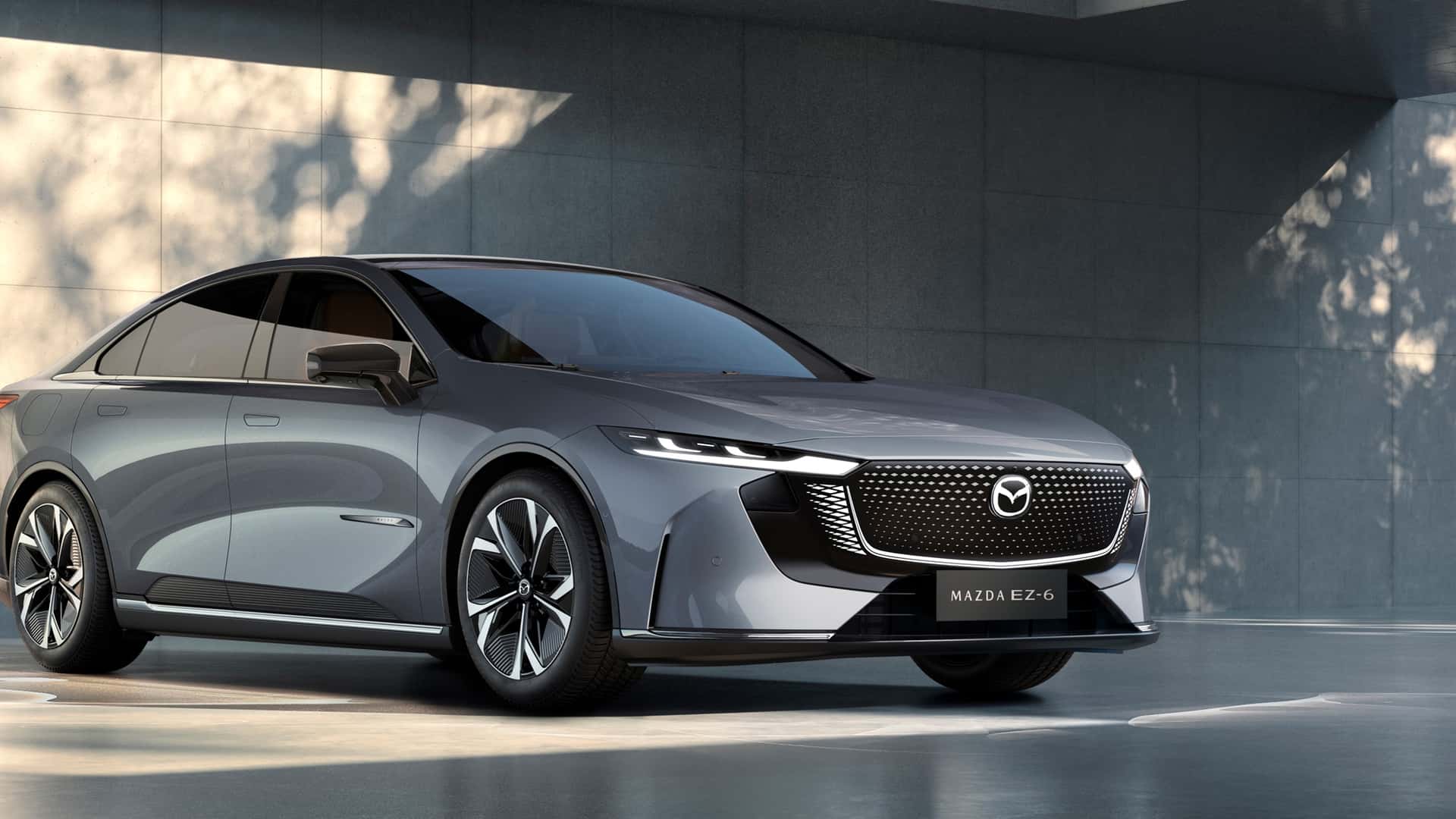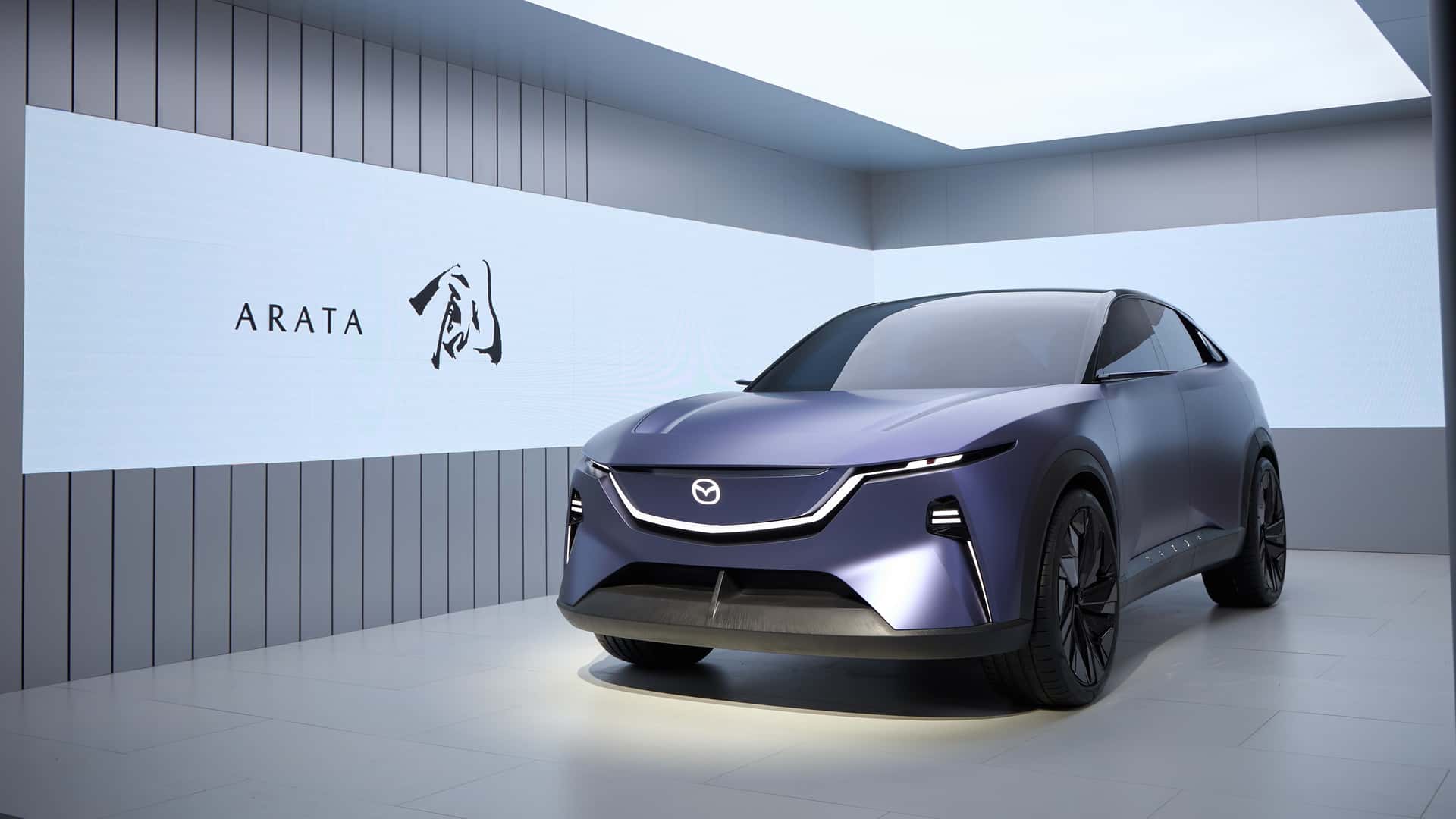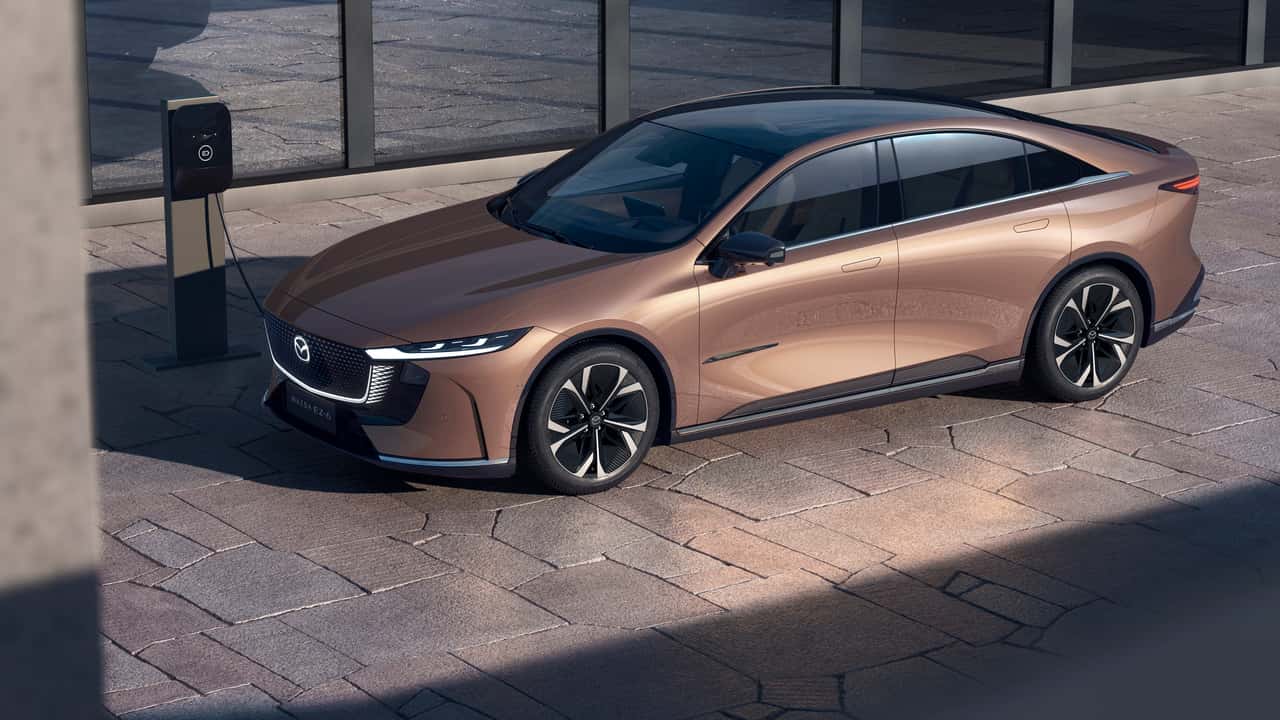- Mazda is among several Japanese carmakers slow to adopt electric cars.
- Thanks to a joint venture with China’s Changan Automobile, there’s a new Mazda EV in the pipeline called the EZ-6.
- It will go on sale in Europe and China this fall.
Mazda is one of the several Japanese automakers labeled as a “laggard” in the electric vehicle race. And for the past few years it has been in a crisis over its largely undefined EV plans.
The automaker, known for its sporty models like the MX-5 Miata and the famous rotary engines, barely has any presence in the U.S. EV market. The only two electrified models it sells are the CX-70 and CX-90 plug-in hybrids. Internationally, however, Mazda will soon offer the EZ-6 electric sedan.
Gallery: 2025 Mazda EZ-6








At an event in Japan today, along with its joint venture partner Chongquing Changan Automobile, Mazda said that the 2025 EZ-6 sedan would be its “first global new energy vehicle.” The concept was first showcased a few months ago at Auto China 2024. The production version will launch in China and Europe in the fall of this year.
This may excite Mazda’s fans stateside, but this model will be manufactured in China. So it’s highly unlikely that it will ever arrive in the U.S., given the stringent tariffs on imported Chinese-made cars. For Mazda, however, it’s good news. The model may help ease some pressure and possibly create a more enduring electrification journey going forward if buyers warm up to it.
The EZ-6 sedan is based on the Changan Deepal SL03. But it’s not a product of simple badge engineering. It’s a good looking car with classic Mazda flair. The rear-wheel-drive electric sedan has an old-school silhouette, mixing sharp angles with smooth curves. The front is highlighted by a sharp nose, sleek headlamps and a slender grille.

Inside, it looks upmarket as well. There’s a panoramic glass roof, floating center screen, digital gauge cluster, wireless chargers and a large and wide center tray.
Mazda hasn’t revealed powertrain and battery details yet, but it said previously that the all-electric version would have a range of 600 km (372 miles) whereas the hybrid model will cover an impressive 1,000 km (621 miles). It’s worth noting that these figures are on the overly optimistic China Light Duty Vehicle-Test Cycle (CLTC).
Changan’s model is offered as a range-extender, so it’s unclear if Mazda would also have its own version of that. What’s clear is that it will adopt Changan’s advanced driver assistance system (ADAS). The EZ-6 will come equipped with Level 2.5 driver assistance features with a robust hardware that includes a seven nanometer Qualcomm chip, four exterior HD cameras and 12 radars.
Gallery: Mazda Arata concept








Mazda also showcased the Arata electric SUV concept early this year. That would have probably made more sense for the U.S. given our appetite for SUVs. But it’s set to enter production by the end of next year in China, so the brand’s U.S. EV line-up will continue to look bare, at least in the near future.
It has the MX-30 range extender EV in its portfolio but that’s on sale only in Europe. InsideEVs reviewed that model early this year and found that it’s pleasant to drive, but has plenty of room for improvement.
Mazda, the renowned Japanese automaker, recently announced its plans to unveil a new electric vehicle (EV) that they are labeling as “truly global.” This new EV is set to be a game-changer in the automotive industry, showcasing Mazda’s commitment to sustainable and environmentally friendly transportation solutions. However, despite Mazda’s ambitious goals, there is one significant problem that may hinder the success of their new EV – the lack of infrastructure to support electric vehicles.
Mazda’s upcoming EV is expected to be a cutting-edge model, featuring advanced technology and innovative design elements that set it apart from other electric vehicles on the market. The company has invested significant resources into research and development to ensure that their new EV meets the high standards that their customers have come to expect. With an emphasis on performance, efficiency, and reliability, Mazda is confident that their new EV will be well-received by consumers worldwide.
However, despite Mazda’s optimism about the potential success of their new EV, there is a glaring issue that they need to address – the lack of charging infrastructure to support electric vehicles. While the automotive industry as a whole has made strides in expanding the availability of charging stations, there are still significant gaps in the infrastructure that may deter consumers from purchasing electric vehicles.
One of the main barriers to widespread adoption of electric vehicles is the limited availability of charging stations, especially in rural and less densely populated areas. Without a robust network of charging stations, consumers may be hesitant to switch to electric vehicles due to concerns about range anxiety and the inconvenience of finding a charging station when needed. This lack of infrastructure is a major hurdle that Mazda and other automakers need to overcome in order to promote the widespread adoption of electric vehicles.
In response to this challenge, Mazda has stated that they are actively working with government agencies, utility companies, and other stakeholders to expand the charging infrastructure for electric vehicles. The company is advocating for increased investment in charging infrastructure, as well as the development of new technologies that make charging more convenient and efficient for consumers. By taking a proactive approach to addressing the infrastructure problem, Mazda is demonstrating its commitment to advancing the electric vehicle market and promoting sustainable transportation solutions.
Despite the challenges posed by the lack of charging infrastructure, Mazda remains optimistic about the potential success of their new EV. With its innovative design, cutting-edge technology, and commitment to sustainability, Mazda’s new EV has the potential to revolutionize the automotive industry and set a new standard for electric vehicles. However, in order to fully realize this potential, Mazda must work collaboratively with other stakeholders to address the infrastructure problem and create a more supportive environment for electric vehicles.
In conclusion, Mazda’s new EV represents a bold step forward for the company and the automotive industry as a whole. While there are challenges to overcome, particularly in terms of charging infrastructure, Mazda’s commitment to sustainability and innovation positions them as a leader in the electric vehicle market. By addressing the infrastructure problem and working to expand the availability of charging stations, Mazda has the opportunity to truly make their new EV a “truly global” success.

